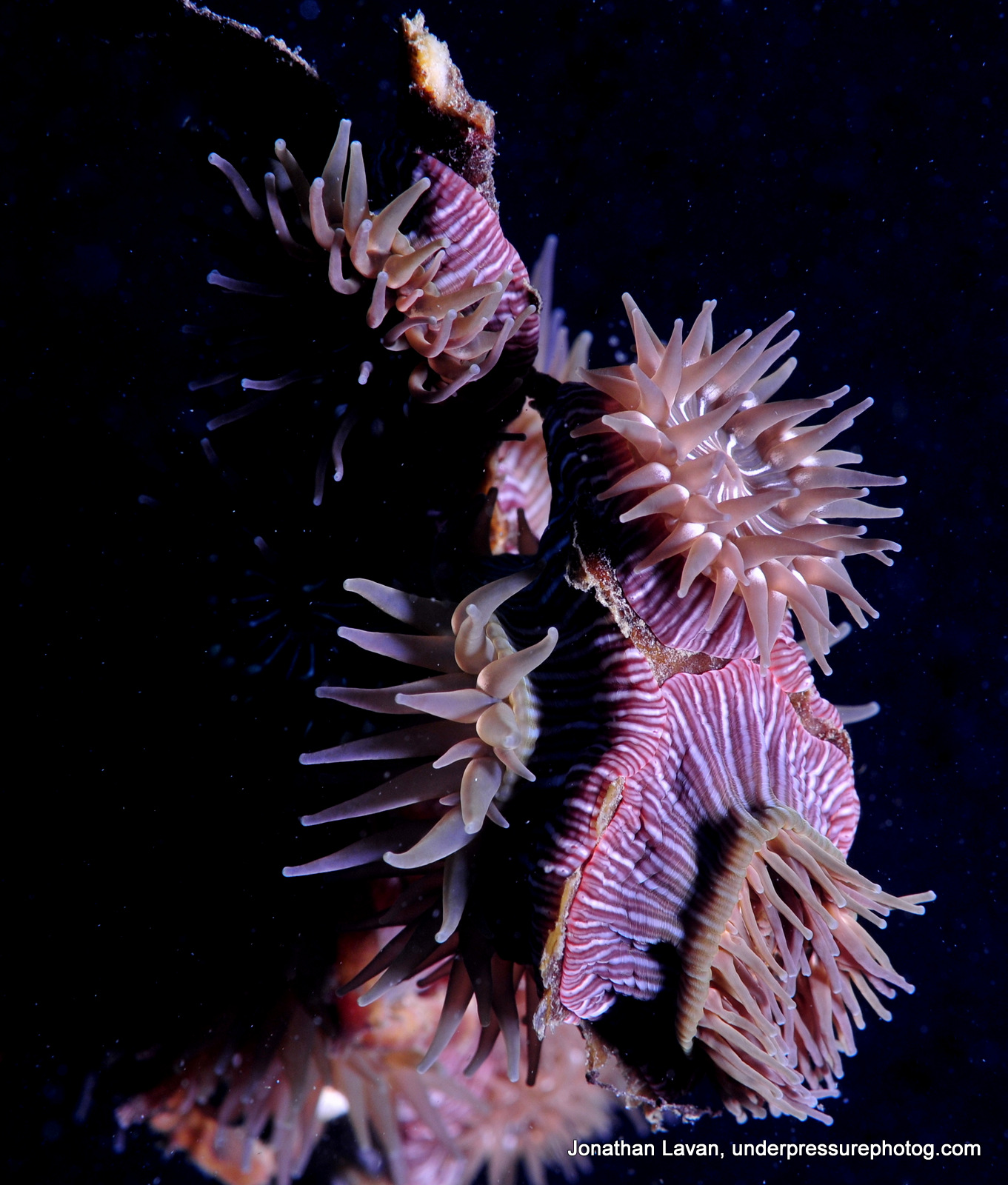A Beginner’s Guide to California Underwater Photo Composition
Jul 06
If you are a photographer who has decided to try your hand underwater you may start to feel that you have bitten off more then you can chew. Even if you’re an accomplished diver there is a great deal to think about. So it is best to start with simple non-moving subjects until you get the hang of the many new variables you must consider when trying to get an interesting and well-composed shot. After all you are no longer just able to stand there with your feet solidly on the ground, you now have an additional dimension to worry about.
As you can see from these first two photos your shot can be of something as simple as a fragment of a sea urchin test or a dead crab, being fed on by a sand dollar and a whelk, and still be quite artful. Move really slowly underwater, much more slowly then you would on land and really look around. Every small patch of algae or detritus could be a photo opportunity.
Moving to something slightly more challenging; look at some kelp. Giant Kelp itself can be quite beautiful and is always the host for scores of different photogenic animals. Since kelp will frequently be moving in the current you will have to move with it which will begin to prepare you for keeping up with swimming fish. Fronds of kelp are a great place to experiment with verticals (portrait) and horizontals (landscape). You can of course crop to this effect in post but using your eye for composition while in the moment will always provide you with a better and more genuine shot. Of course, your underwater housing in the portrait position (held sideways), depending on its size, can take some getting use to but you will find you will adjust quite quickly and it will be well worth it.
Take some time to experiment with lighting and composition to create more drama in your shot. In the shot of the Aggregating Anemones I used only one strobe to create a stark and desolate effect. In the shot of the Spanish Shawl I could have easily taken a nice shot of just the nudibranch but to add story and drama I also framed in the hydroid, (a small stinging anemone) which is the Spanish Shawl’s usual prey. So it pays to know as much as you can about your subject and its habits. The Spanish Shawl “closing in” on the hydroid makes for a much more interesting shot.
Now that you’ve got the hang of things a bit you can work on getting some shots of more sedentary fish. Along the Pacific coast of the U.S. there are many species of Rockfish. Most rockfish spend a great deal of their time resting on the bottom and are fairly hard to spook. If you move in slowly and carefully you often can get several shots. Don’t just take shots from the side experiment with angles. I find three-quarter shots and front shots of fish faces particularly interesting such as this Grass Rockfish among Spiny Brittle Stars on the oil rig Elly/Ellen off San Pedro. Additionally, if you find a fish with markings of high and delineated contrast experiment, in post, with black and white such as this Gopher Rockfish nestled in to the holdfast of the kelp.
Finally, more then any other bit of photographic advice I have imparted: have fun. Learn, create and explore the fabulous underwater world and revel in your ability to record it for posterity and share your images with those who would otherwise have no idea what is down under.
Learn More:
- Best Compact Cameras Summer 2016
- Composition Tutorial Series on Underwater Photography Guide
- Scuba Travel to Southern California
Text and photos by Jonathan Lavan
The owner/operator of Underpressure Diving & Nature Photography is a citizen scientist and wildlife expert and has been SCUBA Diving for thirty years and taking photographs both above and below the water for about 10. He was pleased to have been made Volunteer of the Year for 2012 by the Reef Environmental Education Foundation. As a SCUBA Diver he has been a photographer, teacher and research associate for many different organizations.He is a staunch environmentalist and educator of young people. Jonathan is committed to making a difference on this planet through his images and his message of good will to all creatures. www.underpressurephotog.com













Related Articles
Popular Articles